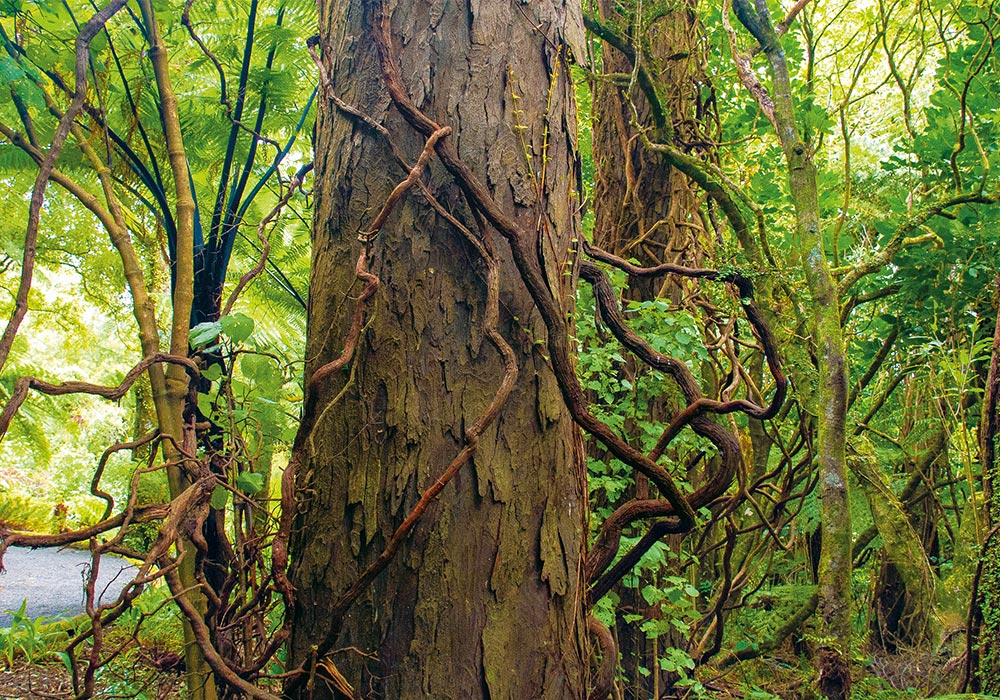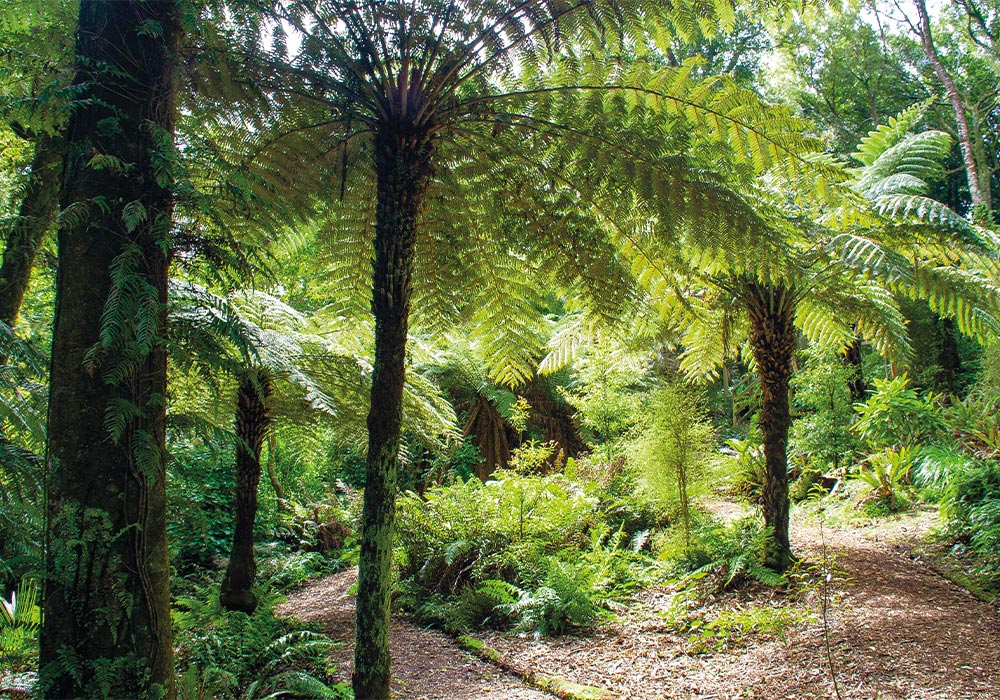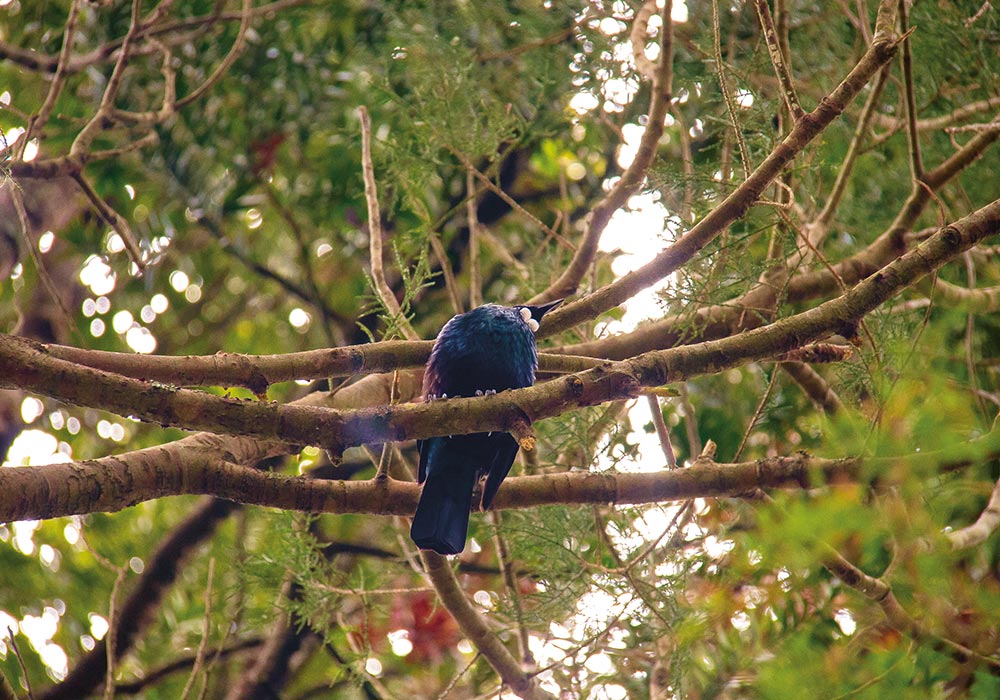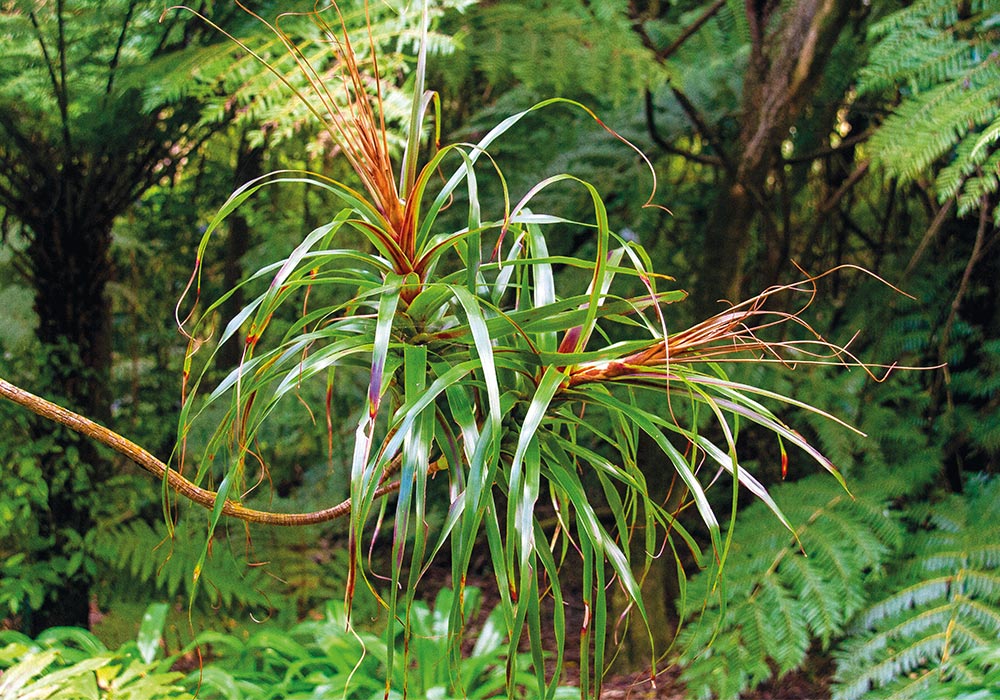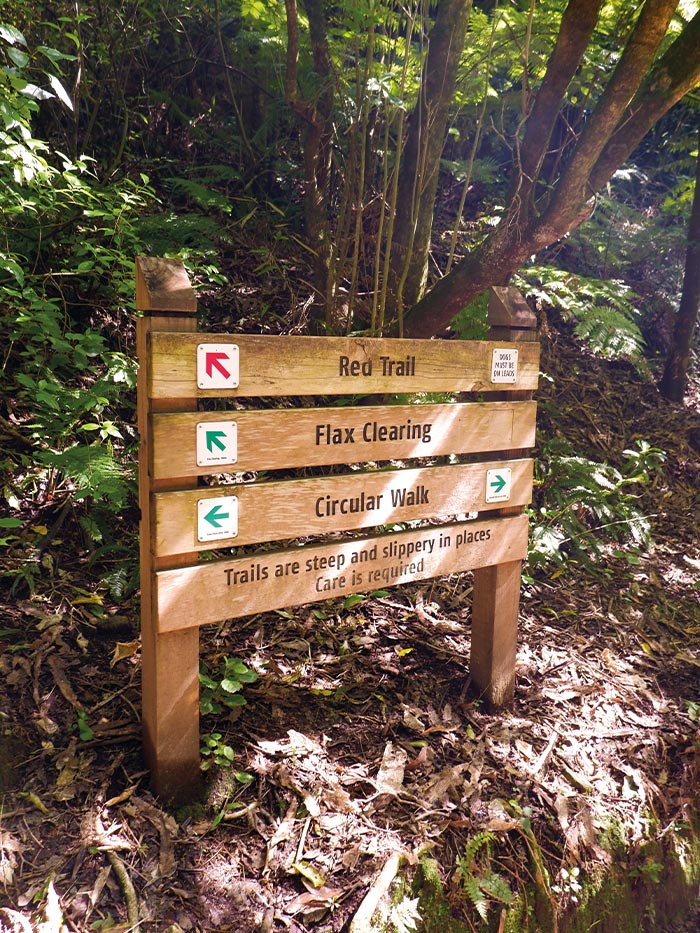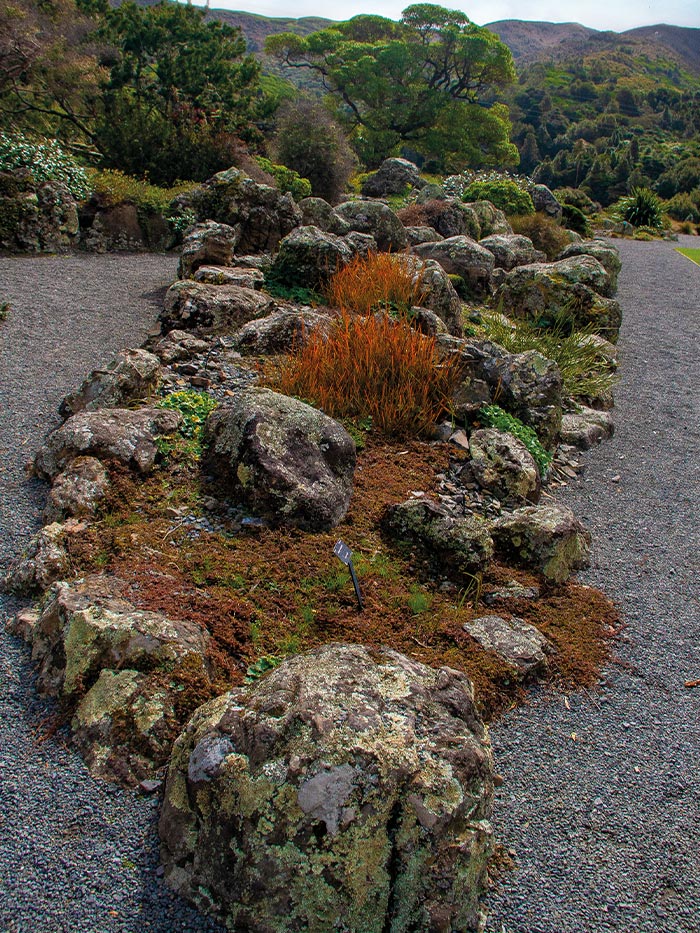Ōtari-Wilton’s Bush, near Wellington city, is a favourite for visitors wanting to immerse themselves in peaceful, green forest, away from the hustle and bustle, says Vivienne Haldane.
On a sunny Saturday morning, my family and I decided on a trip to Ōtari Native Botanic Garden and Wilton’s Bush Reserve. Just five kilometres from Wellington’s CBD, it’s the only botanic garden in New Zealand that’s dedicated to native plants; right up my street (or path!).
Having checked the map, the most challenging thing for Alex, Charlotte and I was choosing which path to follow. There are many forest trails of varying gradients and distances. After a quick look, we decided to go on a free-ranging walk. Along the way, we met little dogs (all on leads) and families with their children; their laughter as they ran and played made me recall chasing after my kids on such excursions. Two little boys on a footbridge squealed with delight as they watched the leaves and sticks they’d tossed into the water, as they swirled and bobbed out of sight.
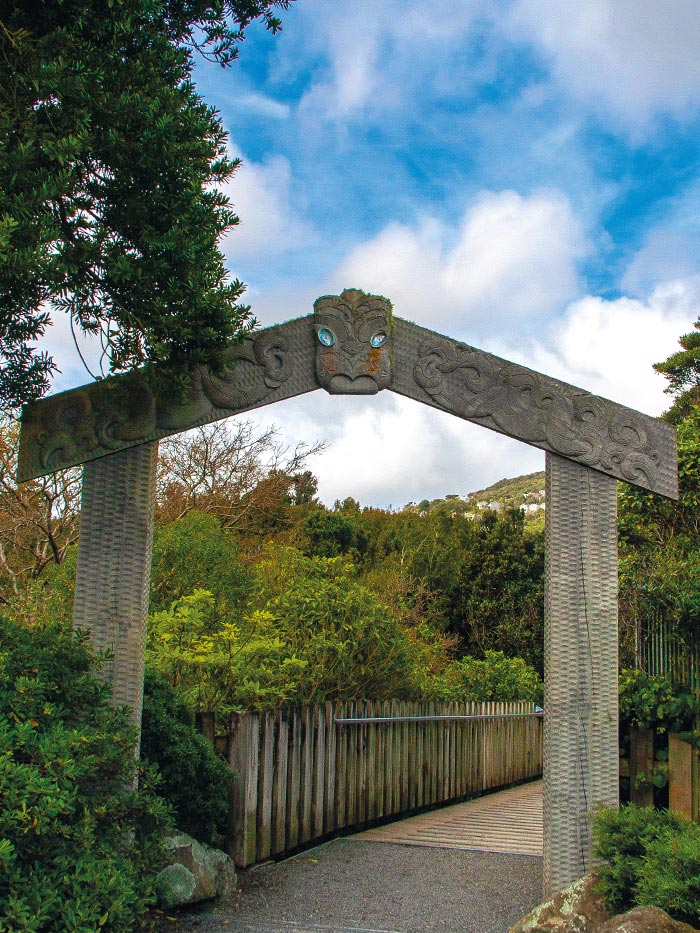
As we walked, we attempted to name as many plants as possible without looking at the identifying markers – with varying degrees of success! Soon we’d worked up an appetite, so we sat down to eat and listen to the sound of the Kaiwharawhara Stream as it gurgled gently through the bush. The 19-metre-high Canopy Walkway led from the visitor centre across a valley and felt like being in the treetops. Walking through the carved waharoa (gateway), we reached the Cockayne Lawn. The area is flanked by collections of plants: the Native Daisy Garden, Brockie Rock Garden, Threatened Species Garden and Cultivar Garden. A grove of closely planted lancewood trees has leaves that look like stick insects; in the Kowhai Garden, kowhai flowers hung like golden pendants from their branches. Houses on the hillside reminded us how close to the suburbs this native forest and botanical garden is, making this space even more unique.
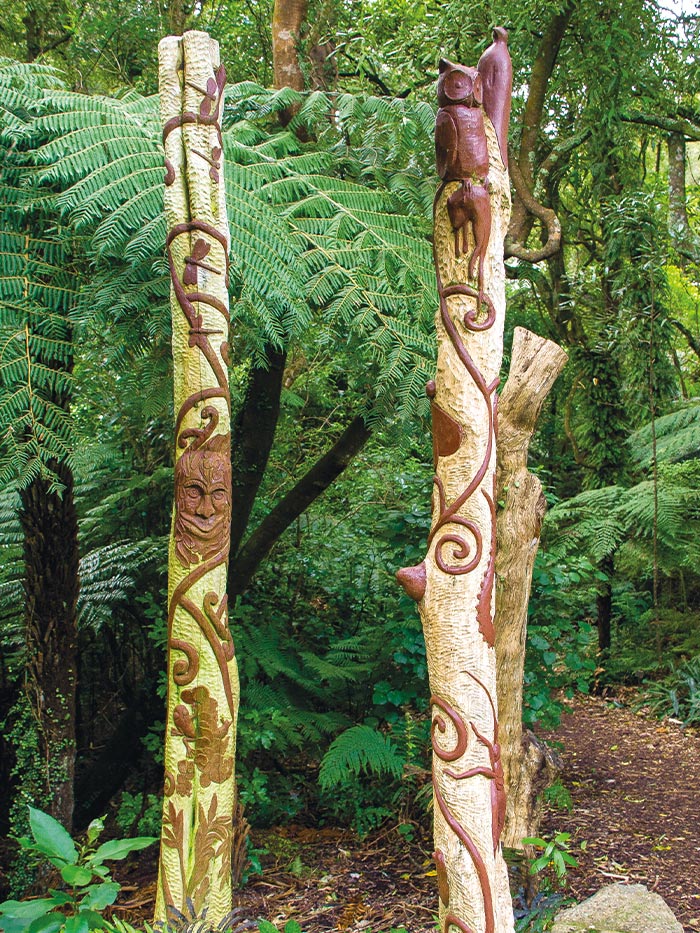
The treasure trail
On Monday, I returned to explore the self-guided Treasure Trail, but I’m after no ordinary treasure: it’s taonga of the botanical kind. The trail, with numbered markers, began in the Fernery. It’s calm and quiet here, the mossy path soft and spongy. You can almost hear nature breathing in and out if you stop and listen. A soundtrack of kākā and tūī calls erupted and pierced the stillness reminding me this was their domain, not mine.
I looked above and saw two bold and cheeky kākā chattering with each other. Suddenly one flew off, swinging on a supplejack vine like Tarzan as he did. The idea for the Treasure Trail was developed by NZ botanist Dr John Dawson as a fun way to introduce visitors to the treasures growing at Ōtari.
Having reached the trail’s end, I sat on a memorial bench seat that was almost engulfed by a wild and unruly Coprosma bush. The final post was the Brockie Rock Garden, home to the hardiest plants that survive in extreme environments such as mountain tops, rugged coastlines, and tussocky hillsides. The Treasure Trail may have been a simple exercise, but I’ve learned many intriguing facts about our NZ bush.
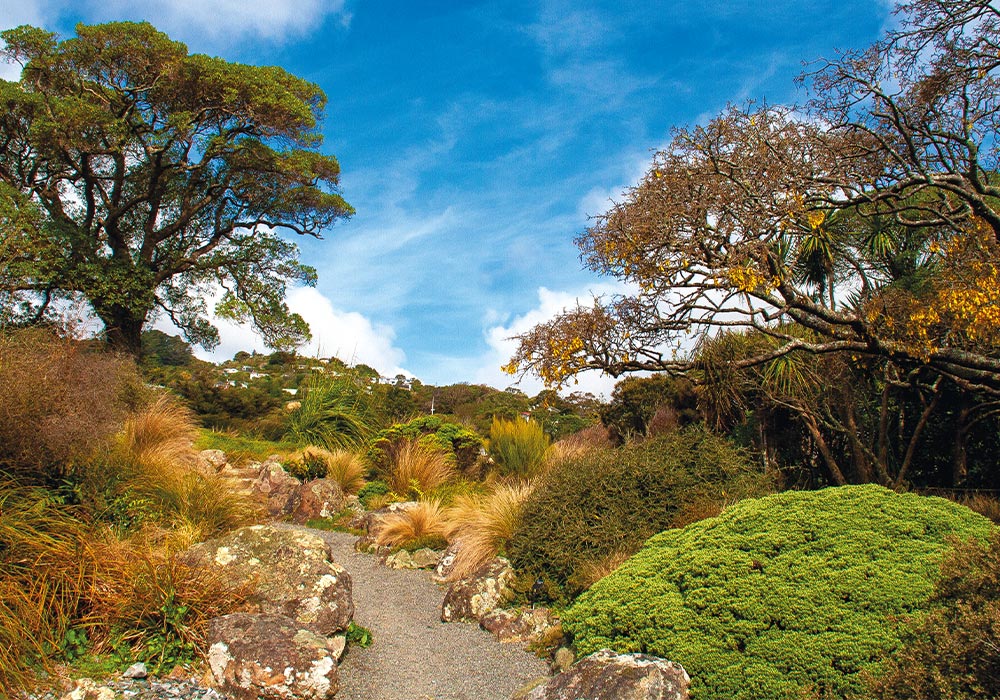
The Ōtari-Wilton’s Bush Trust
Ōtari-Wilton’s Bush is managed by Wellington City Council, which employs a team of horticulturalists, gardeners and scientists. According to Carol West, chair of Ōtari-Wiltons Bush Trust, the trust supports the work of staff with volunteer labour and fundraising to promote Ōtari’s goals.
A shared passion for preserving this native botanic garden and forest reserve for future generations links the twelve members of the trust. I spoke to Tim Park, manager at Ōtari Native Botanic Garden and Wilton’s Bush Reserve, who said during the 1920s, the then director of parks, JG McKenzie worked with botanist Dr. Leonard Cockayne to establish the Native Botanic Garden alongside the native forest. “Leonard came up with the scheme and worked as an advisor and plant collector for the garden. His idea was to establish a traditional botanic garden which was taxonomically organised; he also came up with the idea to create different ecosystems from all around New Zealand – in one place.”
Ōtari-Wilton’s Bush has become a protective haven for many endangered plant and bird species. The tree daisy (kohurangi) is one such example. “Possums had absolutely hammered this plant to put it on the verge of local extinction, but since possum control began in the 1990s, it has come back strongly, and we have figured out how to grow this tricky plant and so we are now replanting it back into the epiphyte clumps up in the canopy.”
Tim says many native birds, such as kākāriki, kēreru (NZ wood pigeon), kārearea (NZ falcon) and kākā, were threatened species that are now thriving. Kōrimako (bellbird) are returning too. This return of wild birds is unique globally as most cities in the world are seeing a decline of biodiversity, but not in Wellington! “People used to come here to harvest kākā; there were records of them being sold in poultry shops in Wellington in the 1870s, this harvest and ravaging pests like rats and stoats caused the kākā population in Wellington to become extinct.
Thankfully kākā are back in healthy numbers around the city again.” A book on the reserve – ‘Ōtari -Two Hundred years of Ōtari-Wilton’s Bush’, by Bee Dawson, was released in November.
History of Ōtari-Wilton’s Bush
When Wellington farmer Job Wilton decided to fence off seven hectares of native bush on his property in 1860, he did a great thing. He’d witnessed the felling of forest for milling and creating farmland and realised such tracts of pristine bush were in danger of disappearing. When they lived there, the Wilton family were vigilant overseers, ensuring no one let fire ravage their patch. The area became known as Wilton’s Bush and was popular with picnickers who were encouraged to enjoy the stream and bushwalks.
Having been sold in 1906 by Job to the Wellington City Council, Wilton’s Bush came under its protection. Ōtari Native Reserve was purchased and added, making it 100 hectares of native forest (including 800-year-old rimu) and a five-hectare plant collection. In 1926 the site became known as Ōtari Open-Air Plant Museum, and its first director was botanist Dr Leonard Cockayne.
In 1999, the place became known as Ōtari Native Botanic Garden and Wilton’s Bush Reserve or Ōtari-Wilton’s Bush for short. Most people call it Ōtari these days. Ōtari-Wilton’s Bush is the largest remnant of old growth native forest on the Wellington Peninsula and the only public botanic garden in New Zealand dedicated solely to native plants.
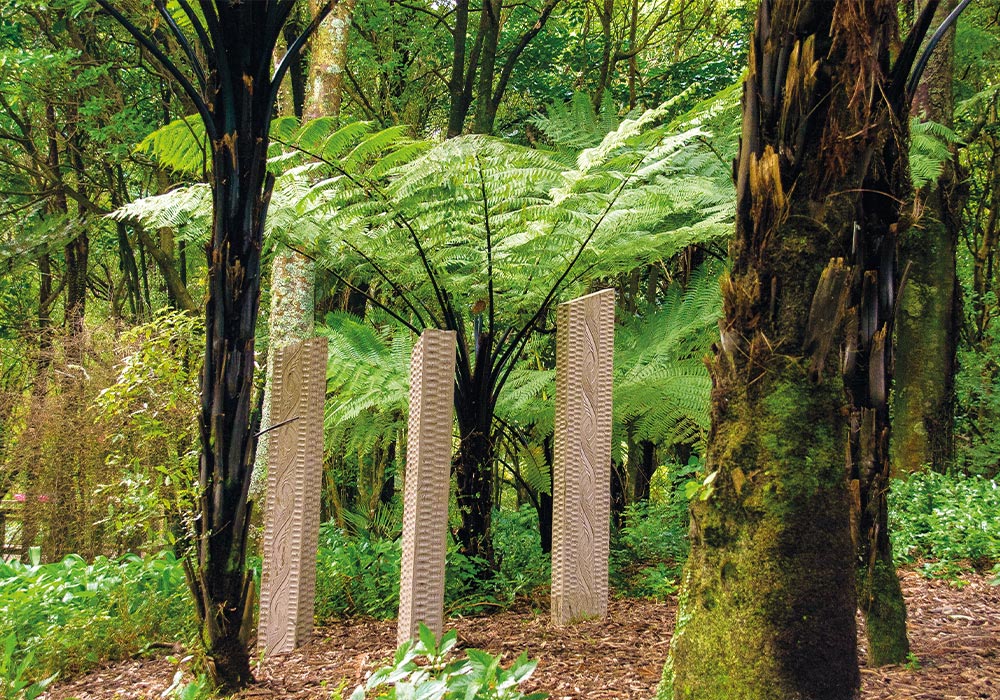
Mana Whenua
Ōtarikākā (Ōtari) means ‘the place of snares to trap kākā,’ so for Māori, it was a mahinga kai, a place for gathering food. The Kaiwharawhara Stream area was valued by both Ngati Tama and Te Ati Awa. Forest tracks link coastal areas in Wellington and Mākara for food gathering. Local Māori gather forest plants seasonally and once cultivated crops such as kumara on north-facing slopes. Native birds like kīwī, kēreru, and tūī were also prized. When European settlers arrived around the 1840s, the land around Wellington controversially acquired and was subdivided and sold. The land in this area was part of a 500-acre block, set aside for Māori, called Ōtari Native Reserve.
Info Box
• Ōtari-Wilton’s Bush, 150 Wilton Road, is accessible via the No 14 Wilton bus route from Wellington city centre. Car parking is available. There is a path suitable for wheelchairs from Wilton Road to the Visitor Centre and the Cockayne Lookout via the Canopy Walkway.
• Entry is free but there is a donation box on the outside wall of the Information Centre. Donations go towards the Ōtari-Wilton’s Bush Trust.
• For more information on Ōtari-Wilton’s Bush visit owbt.co.nz or facebook.com/ wellingtongardens.nz
• Self -contained motorhome parking in Wellington wellington.govt.nz/recreation/outdoors/camping-in-wellington#campervans
